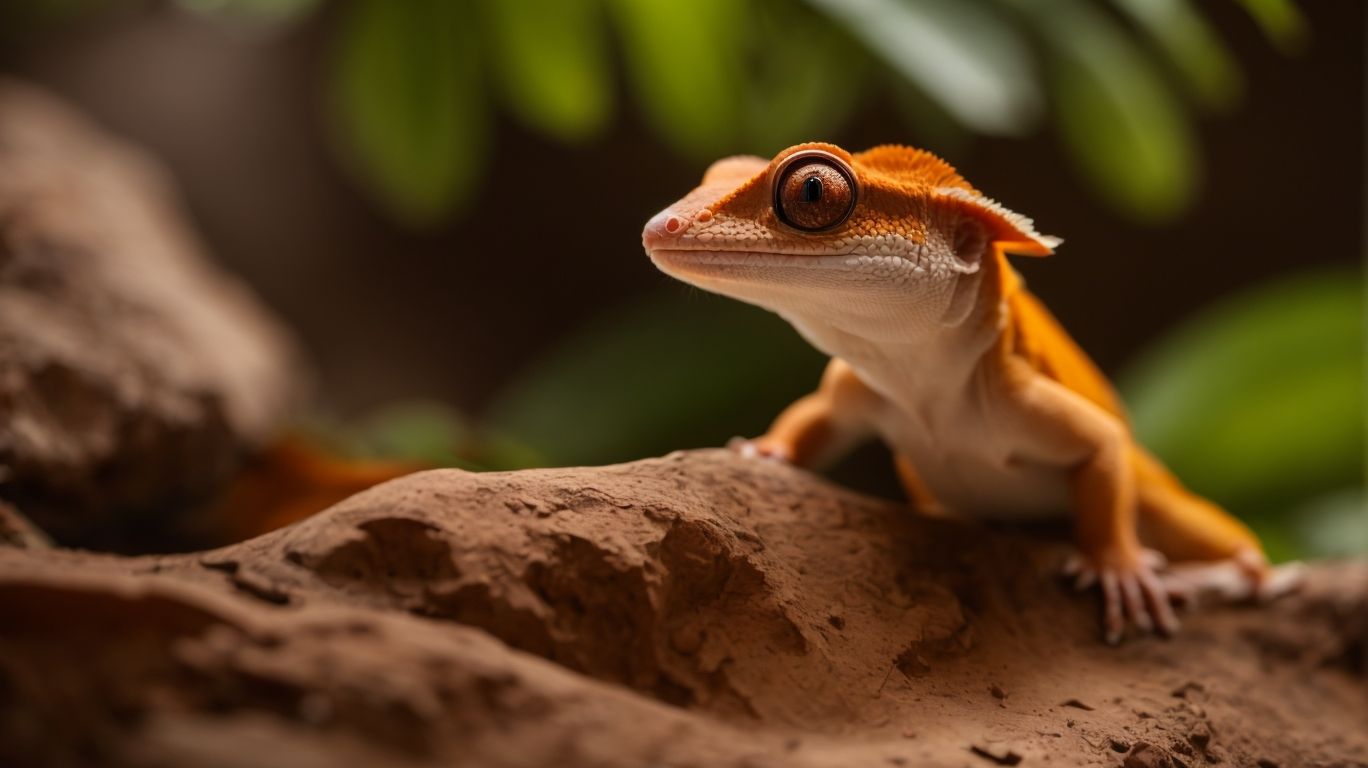
Discovering the Origins: Where Are Crested Geckos From?
Crested geckos, with their distinctive appearance and low maintenance care requirements, have become increasingly popular as pets in recent years. But where exactly do these fascinating creatures come from, and how did they make their way into the world of exotic pets?
In this article, we will explore the origins of crested geckos, their natural habitat, and the countries where they can be found in the wild. We will also delve into the reasons behind their popularity as pets, the different types of crested geckos, and how to properly care for these unique reptiles.
Whether you’re a seasoned crested gecko owner or considering bringing one of these captivating creatures into your home, this article will provide you with all the information you need to understand and care for crested geckos. So, let’s embark on a journey to uncover the history, natural habitat, and proper care of these remarkable reptiles.
The History of Crested Geckos
The history of crested geckos dates back to their discovery in the late 19th century, providing insights into their origins, genetic evolution, and ancestral lineages.
The first documentation of these reptiles was done by a French zoologist in New Caledonia. They were thought to be extinct until they were rediscovered in the wild in 1994. This rediscovery sparked a surge of interest in these fascinating creatures, leading to extensive research on their genetic makeup and evolutionary history.
Through DNA analysis, scientists have traced their ancestry to a unique lineage within the Rhacodactylus genus. This sheds light on their remarkable ability to thrive in various habitats and adapt to changing environments.
Where Are Crested Geckos Found in the Wild?
Crested geckos are found in the wild across specific regions, including Madagascar and New Caledonia, where they thrive in their native habitats, facing threats that contribute to their endangered wildlife status.
What is the Natural Habitat of Crested Geckos?
The natural habitat of crested geckos in Madagascar and New Caledonia encompasses diverse environments with specific temperature, humidity, and substrate requirements, supporting their survival in the wild.
Crested geckos are commonly found in tropical rainforests, where they rely on the forest canopy for protection and feed on insects and nectar in the lush vegetation. Their arboreal lifestyle and nocturnal behavior are well-suited to the warm and humid climate and dense foliage of these regions.
However, their populations are facing threats from habitat loss due to deforestation and climate change. To ensure their long-term survival, conservation efforts such as protected areas and breeding programs are crucial for these geckos in their native habitats.
What Other Countries Have Crested Geckos?
In addition to Madagascar and New Caledonia, crested geckos have been introduced to other countries, leading to concerns about illegal trade, protection legislation, and conservation status.
These unique geckos, known for their distinctive appearance and gentle temperament, have captivated reptile enthusiasts worldwide.
Their increasing popularity in the pet trade has raised alarms about the impact on wild populations and ecosystems. Many countries have implemented strict regulations to prevent the illegal trafficking of crested geckos, recognizing the need to safeguard these creatures in their native habitats.
The conservation status of crested geckos continues to be a subject of concern, driving efforts to promote sustainable captive breeding and habitat preservation.
How Did Crested Geckos Become Popular as Pets?
The popularity of crested geckos as pets emerged from their discovery in Madagascar and New Caledonia, leading to increased demand despite the challenges of illegal trade, conservation concerns, and protection legislation.
What Are the Reasons for Their Popularity?
The growing popularity of crested geckos as pets is attributed to factors such as their unique appearance, low-maintenance care requirements, and the challenges posed by illegal trade and protection legislation.
Their striking physical features, including a distinctive crested spine and large expressive eyes, make them captivating companions. Their adaptable nature means they thrive in various environments, making them an appealing choice for novice and experienced reptile enthusiasts alike.
The increasing concern over the impact of illegal trade has brought attention to the need for responsible and ethical sourcing of these fascinating creatures. Tighter protection legislation has led to a greater emphasis on conservation efforts, prompting pet owners to consider the origins of their crested geckos and support sustainable practices in the reptile trade.
What Are the Characteristics of Crested Geckos That Make Them Popular Pets?
Crested geckos possess characteristics that make them popular pets, including their adaptable behavior, dietary needs, enclosure preferences, and the challenges associated with illegal trade and protection legislation.
The adaptable behavior of reptiles allows them to thrive in different environments, making them ideal for first-time owners. Their diet primarily consists of commercially available powdered diets or fruit-based mixes, making their care simple.
They prefer enclosures with vertical space for climbing and artificial plants for hiding, creating a visually appealing habitat. However, they face threats from the illegal pet trade, highlighting the need for conservation efforts and protective legislation to ensure their sustainable existence in the wild.
What Are the Different Types of Crested Geckos?
Crested geckos exhibit various types and morphs, showcasing distinctive variations in coloration, patterns, crests, tail structures, and eye characteristics, influenced by genetic breeding and species diversity.
What Are the Physical Differences Between the Types?
The physical differences between the types of crested geckos encompass variations in morphs, coloration, patterns, crests, tail attributes, and eye characteristics, reflecting their diverse genetic characteristics and morphological traits.
This diversity results in a spectacular array of crested gecko appearances. Some display vibrant hues of red, orange, or yellow, while others exhibit more subdued earthy tones.
The patterns on their skin can range from intricate bands and spots to solid colors, creating a mesmerizing visual spectacle. The size and shape of their crests also vary among different morphs, from prominent and elaborate to subtle and understated, making each type of crested gecko uniquely captivating.
What Are the Genetic Differences Between the Types?
The genetic differences between the types of crested geckos stem from breeding efforts, species diversity, and ancestral lineages, contributing to the distinct morphs and variations observed within the crested gecko population.
The breeding efforts have led to the development of various color morphs, patterns, and traits in crested geckos, offering enthusiasts a wide array of visually stunning specimens to choose from.
Species diversity plays a crucial role in the genetic makeup of crested geckos, influencing their physical characteristics and behaviors. Understanding the ancestral influences on different gecko lineages provides valuable insights into their genetic diversity and evolutionary history, shedding light on the fascinating genetic tapestry that exists within the crested gecko community.
How to Properly Care for Crested Geckos?
Proper care for crested geckos involves addressing their behavior, dietary needs, ideal enclosures, temperature and humidity requirements, appropriate substrate, health management, and safe handling practices to ensure their well-being.
What Type of Enclosure is Best for Crested Geckos?
Selecting the best enclosure for crested geckos involves considerations of optimal temperature, humidity levels, suitable substrate, and space for their well-being, health, and safe handling.
To ensure the health of your crested gecko, it’s crucial to maintain a temperature range of 72-80°F during the day and 65-75°F at night, along with a humidity level of 60-80%. This can be achieved by using a non-toxic, moisture-absorbent substrate such as coconut fiber or bioactive soil.
In addition to temperature and humidity, providing ample climbing and hiding spaces within the enclosure is essential for your gecko’s mental and physical stimulation. When handling them, it’s important to be gentle and support their delicate bodies to minimize stress.
What is the Ideal Diet for Crested Geckos?
The ideal diet for crested geckos includes a mix of insects, fruits, and nectar, aligning with their omnivorous nature to support their overall health and nutritional needs.
These insectivorous reptiles thrive on a balanced diet that may consist of gut-loaded crickets, roaches, or mealworms for their protein intake.
The inclusion of sweet, ripe fruits such as mangoes, bananas, and papayas provides necessary vitamins and natural sugars, while nectar supplements their diet with essential carbohydrates. It’s crucial to ensure a diverse and nutritious diet to maintain their well-being and vibrant coloration.
What are the Common Health Concerns for Crested Geckos?
Common health concerns for crested geckos encompass potential diseases, care-related issues, and the importance of safe handling practices to safeguard their overall well-being and vitality.
Crested geckos are prone to several health problems, such as metabolic bone disease, parasitic infections, and respiratory issues. It’s essential to maintain appropriate humidity levels, offer a well-balanced diet, and schedule regular vet visits to keep them in top shape.
Additionally, handling these reptiles with care and gentleness is crucial to avoid stress and potential injuries. By proactively addressing these health concerns, crested gecko owners can ensure their pets live long, happy lives.




No Comments